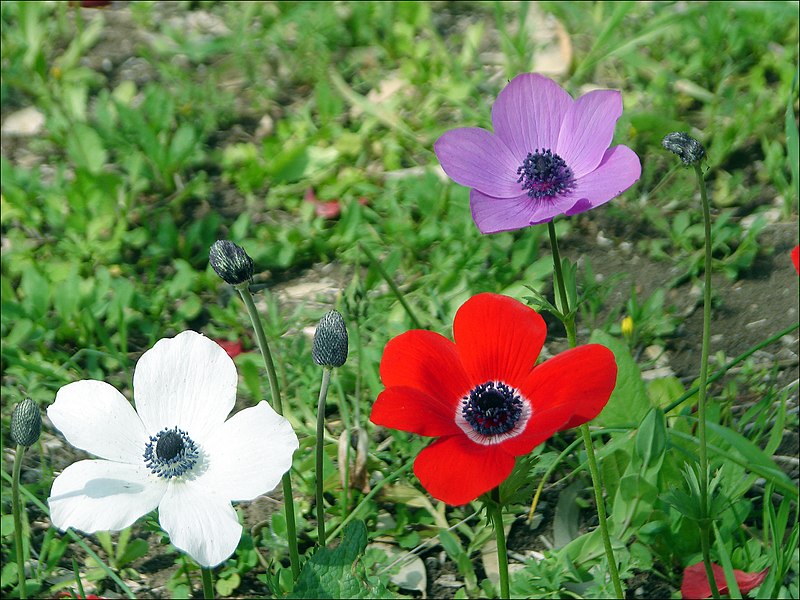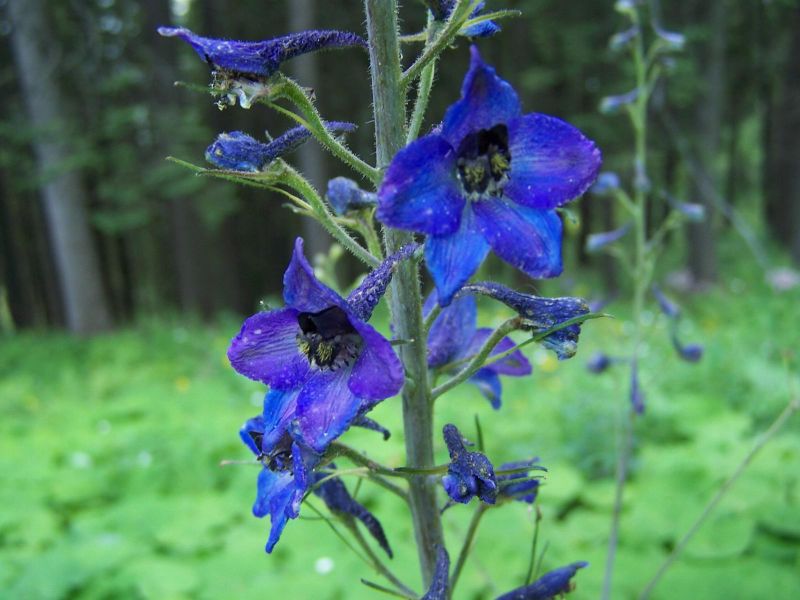i came to floral design in a roundabout sort of way. before i snipped stems and made bouquets, i trekked through the forests and wetlands around oregon staring wide-eyed at wildflowers. my major in college was biology, but only because the university didn’t have a botany program.
much of my focus was given over to systematic botany, studying the evolutionary relationships between different families of plants. it’s still fascinating to me to relate commercially grown cut flowers to each other and their wildflower relatives.
one of the largest families of flowering plants, the ranunculaceae, is also one of the most diverse. it’s an ancient family, and the diversity of it lends well to hybridization for our purposes–it’s easy to select for a bazillion petals over time, which is precisely what we’ve done.
ranunculaceae is the buttercup family, and the typical form is easy to find in the spring time. these guys, ranunculus occidentalis, are native to the area and a great example of a few key characteristics of the family–five petals and lots and lots of stamen.
florists mostly use hybrids of a different species, ranunculus asiaticus, aka persian buttercup. they seem pretty wildly different from those sweet little buttercups until you peer inside and notice all those stamen.
 |
| photo by aviad2001 via wikimedia commons |
hellebores and anemones are part of the ranunculaceae, each in their own genus. it’s getting easier to spot the relation, right? if you buy these guys at a flower stall or nursery, they’re much closer in appearance to their original form, unaltered by our artificial selection. kinda. hellebores are remarkably easy to cross and hybridize, and i swear there’s a whole gardening subculture devoted to doing just that. gardeners have come up with all sorts of crazy colors for hellebores, and have even added rows and rows of petals. the latter seems to be humans’ favorite way of altering plants for our own enjoyment.
 |
| photo by jerzy opiola via wikimedia commons |
_02.jpg/750px-Schwarzviolette_Akelei_(Aquilegia_atrata)_02.jpg) |
| photo by haolrd supfle via wikimedia commons |
things get weird when you consider delphiniums (also used by florists a lot, at least around here where they’ll be growing like weeds in a few weeks) and columbines, with their crazy spurred petals. the spur that juts out behind the face of the flower holds a tasty nectar reward for passing bees, enticing them to stay awhile and unknowingly gather lots of pollen to deliver to the next flower over. what look like petals in this case are actually sepals, fused in various ways. as alien as they appear next to the buttercups and anemones, the many stamen are still present, and they bear the same sort of fruit as the rest of the family.
thanks for indulging my science kick. i could go on and on about all sorts of flowers and their relatives. which ones would you like to see next?













Comments on this entry are closed.